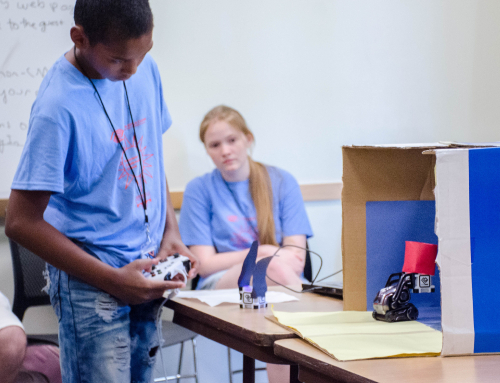The University of New Hampshire announced it will be accepting the Gaokao score as part of the admissions process for Chinese international students at a news conference on June 10, 2018 in Beijing. PIE News led the way in reporting this; Reuters, the Associated Press, Bloomberg, the New York Times, BBC, People’s Daily and local New Hampshire media outlets all followed and covered this move towards inclusion.

This is the first American flagship state university to officially announce use of the Chinese Gaokao as one way assess fit for admission. Historically in the U.S., only private universities, liberal arts colleges, and community colleges have considered the Gaokao score.
Universities from Australia, Hong Kong and France have long been accepting Gaokao scores as admission criteria; in fact, the Australian government commissioned a large scale study to look at its utility as admission criteria.
Four days after UNH’s Gaokao announcement on June 10, several American public universities also announced they will accept Gaokao students for direct admission, including Washington State University, Oregon State University, and Colorado State University.
Should my university consider Gaokao score and SAT?
Perhaps one reason why the U.S. has been resistant to accepting the Gaokao is rooted in its lack of knowledge about the validity of the scores. However, the Gaokao score is considered one of the most fair and trustworthy systems in China.
The SAT is considered an aptitude test whereas scholars would argue the Gaokao is an achievement based test. However, in the current climate where students around the world practice and train for the SAT, this exam itself is becoming more achievement based than aptitude based. One can take courses to prepare for the SAT, take the SAT multiple times, fly abroad to take SAT due to no SAT test available in mainland China, and therefore, is the SAT still a truly valid aptitude test, especially for Chinese student?
Chinese universities are competing with each other for students with the best Gaokao scores-implicit in this is the assumption that those with the highest Gaokao scores will be the most successful students in college and therefore, they are considering the predictive value of the Gaokao score in a similar way to the goals of an aptitude test. Chinese universities have been using the Gaokao for 41 years and continues to refine its questions. It is assumed by most Chinese universities that a high GK score will lead to the best and brightest students.
We can also look into the result of Gaokao allocation recruitment system – its graduates. In a matter of fact, every single one of the 120,000 Chinese college graduate, currently in the U.S. Master and Doctor’s programs, was once an accomplished Gaokao taker, without exception. Some of Gaokao takers and Chinese college degree holders, are not too bad compared to their peers in the competitive postgraduate program peers in some top U.S. universities, such as the author himself, a Gaokao taker and a Chinese university degree holder.
Chinese universities admit students based only on their Gaokao score. A computer system will allocate college seats based on the Gaokao score while also accounting for a student’s order of preference for schools. The score not only determines the college, but the student’s intended major. After a student is paired with a college, their major is determined and the student cannot change schools or majors.
Should my university consider Gaokao score and other academic credentials?
Chinese colleges receive all of their freshman class solely based on Gaokao score, without high school transcript, reference letters, personal statements, or financial affidavits.
This is the major hurdle preventing for U.S. universities from considering Gaokao school students, because Gaokao high schools are not equipped to provide credentials U.S. admission offices demand, such as transcripts in English, and the Western style reference letters from math teachers and high school counselors. High school counselor profession simply does not exist in Gaokao schools. In the allocation recruitment (to be described later), those mechanisms are not part of the admission process to Chinese universities. International schools in China aggressively fill this gap by being able to conveniently provide those credentials the U.S. universities require.
Unlike the nationally administered Gaokao with Ministry of Education central archive and verification, the international high school programs’ academic credentials, and even international high school accreditations, were described as “alike but not equal” by a WES report.
Facts about Gaokao
The National College Entrance Examination (aka Gaokao), is an official academic examination held annually on June 7th and 8th by the Ministry of Education in China. Almost all Chinese higher education institutions solely use the Gaokao score as the determining factor in freshman admission. In 2018, 9.75 million students nationwide took the Gaokao, a 3.5% increase over 2017. The Gaokao is a 9 hour long academic test administered once a year with total score of 750.

Transfer between into Chinese universities is not allowed, according to the “High Education Student Management Regulation” by Ministry of Education. To change schools requires undergoing the Gaokao process again in another year. In 2014, a student from Hong Kong University (despite a full scholarship obtained by her top Gaokao score in Liaoning Province) withdrew from HKU due to difficulty in adjusting to the curriculum, language, and environment of HKU. She chose to spend one year studying to retake the Gaokao, and was admitted to her dream school: Peking University with a top Gaokao score again.
Gaokao tests 6 subjects. The three common subjects include Chinese, mathematics, and foreign language. The other three subjects for science track students are: Physics, Chemistry, and Biology. There other three subjects for humanities track students are: History, Geography, and Political Education.
The post-Cultural Revolution Gaokao exam has been administered for the past 41 years with Gaokao reforms since in 2013.
Because of its direct link to university admission, the Gaokao is the most crucial test for all Chinese students targeted to Chinese universities. Students typically spend their entire senior year or more of high school preparing for this exam. Controversial high performing “Gaokao Factories” produce high score students, while also receiving wide criticism due to departure from a holistic education viewpoint.
In short, in China, the Gaokao is one of the most important parts of the secondary education system for all Chinese college preparation students who have not chosen the international curriculum. According to an article from The Guardian, the Gaokao is the “toughest test in the world”.
The above is only an outline of the Gaokao. Variations exist due national and provincial level Gaokao policies as well as ongoing Gaokao Reform.
What are the benefits of recruiting from the Gaokao pool?
Large student Pool of Gaokao
Approximately 97% of Chinese college- bound Chinese 12th graders take the Gaokao exam and 3% choose the international school route which requires the TOEFL and SAT. In other words, the Gaokao student pool is 30 times larger than the non-Gaokao student pool. At present, U.S. international colleges and universities mainly tap into the international school student population in China, because of TOEFL and SAT requirements. It is almost impossible for Gaokao students to take TOEFL and SAT before Gaokao.
Recruiting from this population significantly increases the student pool.
Academically qualified vs. TOEFL/SAT score qualified
The Chinese National Education Examinations Authority (NEEA) publishes the comprehensive examination requirements annually. For example, the Mathematical Guideline for science track includes knowledge requirements, ability requirements, characteristic requirements and evaluation requirements.
Rather than competing fiercely with their Gaokao peers by being evaluated by the mathematical and other subject guidelines from NEEA, many of the international track students treat the TOEFL and SAT as the “Western Gaokao” (洋高考). Many of the international school administrators in China allow and even encourage students to take extended leaves of absence, to prepare for the TOEFL and SAT in full time off-campus programs.

In China, most international track students take the TOEFL and SAT multiple times, with heavy practice on past leaked SAT problems acquired by cram preparation programs. Both the TOEFL and SAT are treated as achievement tests, not as aptitude tests.
With the experience of “Gaokao Factories”, it is not hard to duplicate the same method to create “TOEFL/SAT Factories”. The difference is, one produces academically qualified students, and the other produces only TOEFL/SAT qualified students.
Authenticity of Gaokao
There is no record of the Gaokao ever being leaked, repeated or canceled for the past 41 years, whereas this has occurred multiple times with the SAT. In fact, many Chinese students will choose to fly to the U.S. to take the SAT given the number of times Asia test centers have canceled SAT exams.
The Gaokao is administered by the government once a year and it is a federal felony (with up to seven years imprisonment) to cheat on this exam.

Established Gaokao recruitment methods in China
Method 1. Allocation Recruitment (Tongzhao, 统招) : Almost all of the Chinese students are allocated by the province level Education Examination Authority to all of the universities according to students’ Gaokao scores.
All majors within colleges have planned seat numbers, and this quota is publicly announced in each province. Those seats are to be filled solely by the the applicant’s Gaokao score, in the order of the application’s Gaokao score rank.
The allocation process is known for its efficiency. All freshmen classes of all Chinese colleges are filled in a matter of a few days, because it is purely done by Gaokao score ranking, and allocated remotely by computer.
The Allocation Recruitment is objective, not subjective. Therefore it is considered as one the “fairest” system in China. It does not rely upon reference letters from teachers which can vary in quality, review of materials by differently trained admissions officers, or utilize systems that advantage students, such as the U.S. legacy considerations that some schools have.
Since the Gaokao is authoritative and almost free to students, any student with a top Gaokao score can be admitted to a top university. All of the top Chinese universities are public.
One student can only be allocated to one college at a time by the computer, so multiple offers to one student will not exist in the Allocation Recruitment method.
In China, the Gaokao score equals a college seat according to score and ranking. This is the fundamental reason why Chinese students and parents judge international universities only by ranking, because the Chinese Allocation Recruitment method has trained them in this way.
In 2018, only two Hong Kong universities, Hong Kong Chinese University and Hong Kong City University, chose to use this allocation recruitment method (among the 12 Hong Kong universities recruiting Gaokao students in mainland China).
Method 2. Independent Recruitment (Zizhao, 自主招生): The Gaokao plus school administered tests. Since 2013, as part of Gaokao Reform, some of the top Chinese universities started to implement a process that included a school administered test plus the Gaokao. However, the universities and students who can participate in this process was limited. In 2018, 10 universities in Hong Kong chose the Independent Recruitment method, including the University of Hong Kong, Hong Kong Polytechnic University, and Hong Kong University of Science and Technology. The University of New Hampshire has chosen the Independent Recruitment method.
Challenges to only considering the TOEFL and SAT
The TOEFL exam is administered by Educational Testing Service subcontractors in China and it is not a crime to cheat in the way it is for the Gaokao. Contract cheating on TOEFL exams can be easily arranged in the China market.
The SAT is not administered at all in China and in fact, students must fly to Hong Kong, Japan, Thailand, U.S., or other foreign countries to take this exam.
With Chinese applicants seeking U.S. education typically taking the SAT three to four times, this costly endeavor also decreases accessibility to an international education for many, many students.
Summary
Many U.S. universities want to increase international student enrollment, especially from the China market, and thus the Gaokao is worth researching.
In present day, Chinese students have more opportunities when it comes to international education. We, as American international educators, should be humble, and learn from the potential student’s perspective.
WholeRen Group, a Pittsburgh-based Chinese student recruiting and student success coach company, has consulted with a large, public state university about recruitment steps in China, named the university’s Post Gaokao Project (“U PGK”). Wholeren Group’s collaboration with the university included
three parts: one, consulting, planning and market implementation in China; two, setting up the WholeRen Guided Academic Opportunities program with an on campus office at the university to support Chinese students’ success via individualized, bicultural private support services; three, WholeRen supports the official U PGK office in Guangzhou, China. All 4 WholeRen China offices support the U PGK recruitment and customer service. Chinese parents want local access before and after enrollments, local phone numbers, and WeChat. Gaokao exists and can possibly be the next biggest trophy in student recruitment arenas. If U.S. schools choose to ignore this fact, there is no question that others will take advantage of this student pool.
It is no secret that many U.S. universities are under enormous pressures to increase their international recruitment results. The Gaokao has proven itself to be an indicator of dedication and work ethic, to be valued by institutions of learning. Particularly for those schools seeking to level the playing ground culturally–e.g., for those applicants from countries where academic achievement outshines extracurricular participation–it would be in their best interests to look towards this pool as a vital one to sustaining an institution’s academic rigor while also diversifying its student cohorts.
To enhance recruitment of qualified international students from China, the Gaokao student pool is a possible answer for your university. However, institutional readiness, on the ground recruiting support in China, culturally sensitive on-campus support for Gaokao students, and rapidly adapting to the ever-changing landscape of international recruitment remain major challenges in implementation.




